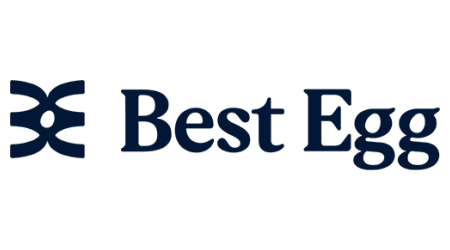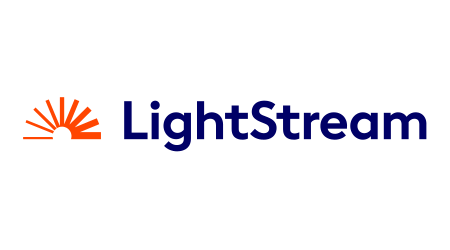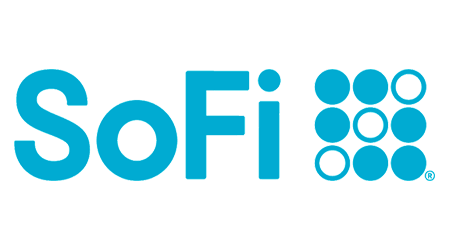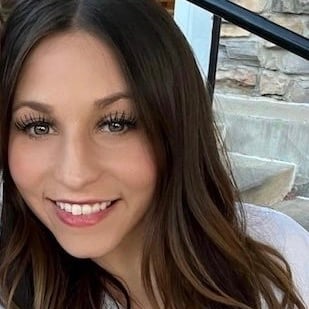A $30,000 personal loan can save the day if you have a big expense and don’t want to dip into your savings or emergency fund. Typically, you’ll need sufficient income, a low debt-to-income (DTI) ratio and a good credit score to qualify for a loan of this size, but some lenders have more lenient criteria. Be sure to compare multiple lenders, including banks, credit unions and online lenders.
Personal loan lenders
Select your state, credit range, loan amount and loan purpose to compare interest rates and loan terms from companies that offer $30,000 personal loans.Compare other products
We currently don't have that product, but here are others to consider:
How we picked theseWhat is the Finder Score?
The Finder Score crunches 6+ types of personal loans across 50+ lenders. It takes into account the product's interest rate, fees and features, as well as the type of loan eg investor, variable, fixed rate - this gives you a simple score out of 10.
How to get a $30,000 personal loan
Follow these six steps to apply for a $30K personal loan.
- Calculate what you can afford. Analyze your budget to determine how much money you can allot toward your $30,000 personal loan payment each month.
- Explore your options. Look for lenders that offer $30,000 personal loans for your purpose. For example, you might search for lenders that specialize in debt consolidation if that’s your goal. You can evaluate online lenders, banks and credit unions.
- Compare lenders. Once you’ve found lenders that offer $30K personal loans, you can begin comparing interest rates and loan terms. It’s also smart to look out for origination fees, prepayment options and credit score or income requirements.
- Get prequalified. Most lenders conduct a soft credit check to estimate your interest rate on a $30K personal loan. Compare multiple quotes to find the best deal. Note that your quoted interest rate may change once you go through the formal approval process.
- Gather your documents. Documentation requirements may vary by lender, but in general, expect to have the following information handy: Social Security number, proof of identity, proof of address and employment and income verification.
- Apply. Once you’ve picked a lender that fits your needs, follow the instructions to fill out the loan application and submit the required documentation. The lender should notify you within a day or two if you qualify.
Eligibility requirements for a $30,000 loan
Exact requirements to qualify for a $30K loan vary by lender, but they are typically most interested in your credit history and income. Be prepared to meet the following criteria:
- Have a good credit score. For loans of this size, lenders typically want credit scores in the mid-to-high 600s and higher, but some online lenders and credit unions may be less strict.
- Have a low debt-to-income (DTI) ratio. Your DTI compares your minimum debt payments to your income. Most lenders prefer a DTI of 35% or less for a $30K personal loan but may accept a ratio of up to 43%. Calculate your own DTI ratio by dividing your total monthly debt payments (credit cards, student loans, etc.) by your monthly gross income.
- Have a job. Lenders require proof of income to approve your loan. Depending on your occupation, you need to provide some or all of the following: W-2s, paystubs, bank statements, 1099s or tax returns.
- Be over 18 and a US citizen or permanent resident. Most lenders require you to be at least 18 and a resident to apply. There are loan options for nonresidents, but you may need to meet additional requirements or get a cosigner.
How to increase your chances of loan approval
The better your credit score, the better your odds of obtaining approval on a $30,000 personal loan. One of the best ways to improve your credit score is to pay down as much of your existing debt as you can before you apply for a new loan.
You may also want to get a copy of your free credit report to check for inaccuracies. If you find any, you can dispute the errors and have them removed from your credit history.
Another way to improve your chances of loan approval is to increase your income. This might mean picking up extra hours at your current job or taking on a side gig.
Can I get a $30,000 personal loan with bad credit?
Getting a loan with less-than-stellar credit can be harder, but it’s not impossible. For example, some lenders, such as Upstart and PenFed Credit Union, specialize in personal loans for borrowers with lower credit scores. However, you will likely qualify at a higher interest rate than those with good or excellent credit.
To get around the higher interest, you have a few options. One is to raise your credit score before you apply for a $30K personal loan. Alternatively, see if a friend or family member with a better credit score will cosign the loan with you. You can also look into secured loans, which can be easier to qualify for.
How much does a $30,000 personal loan cost?
In addition to repaying the loan’s principal, you’ll also need to pay interest, which can run anywhere from about 6% to 36% for a $30K loan.
You may also have to pay an origination fee, also known as a processing or administrative fee, between 1% and 10% of the loan amount. Most commonly, the fee is deducted from the loan amount. For example, if the fee is 5%, you’ll only receive $28,500 instead of the whole $30,000 you applied for. Some lenders don’t charge an origination fee but might make up for it with a higher interest rate.
The length of your loan term also affects the cost. For instance, shorter-term loans typically have lower interest rates, meaning you’ll pay less for the loan. However, your monthly payments will be higher with a shorter loan term, so make sure you can fit the higher loan payment into your budget.
Calculate your $30,000 personal loan payment
Use our loan calculator to compare monthly payments based on a $30K personal loan at different interest rates and loan terms.
$30,000 loan repayment calculator
See how much you'll pay|
Your loan
|
|---|
| Loan amount |
|
$
|
| Loan terms (in years) |
|
|
| Interest rate |
|
%
|
Fill out the form and click on “Calculate” to see your estimated monthly payment.
or
Compare personal loans nowBased on your loan terms
| Principal | $ |
|---|---|
| Interest | $ |
| Total Cost | $ |
Five tips to get a low rate on your loan
- Ask for a shorter loan term. Shorter loans tend to come with lower interest rates.
- See if you can find a cosigner. If you apply with a lender that allows a cosigner, you’ll add security to your loan application, which could up your chances of getting a lower interest rate.
- Compare multiple lenders. Compare loans from several lenders to ensure you get the best deal for your situation.
- Raise your credit score. A higher credit score signals less risk to lenders, which means lower rates for you.
- Consider a secured loan. If you have collateral, such as a car or home, this could mean lower rates for you. However, if you can’t repay the loan, your assets are on the line.
How to pay off $30,000 in debt
You can use a few strategies to repay your $30K personal loan rather than sticking with the set repayment schedule.
- Refinance. If interest rates go down during your loan term, you may be able to refinance the remaining balance at a lower rate.
- Pay extra when you can. The faster you pay off your loan, the less you’ll pay in interest. Even an extra $20 or $30 a month can make a difference.
- Consider payment splitting. Another strategy to reduce interest charges is to practice payment splitting. Just pay half your payment 15 days before the due date and the other half on or before your due date. Bonus: this can also improve your credit score.
Alternatives to personal loans
If you don’t qualify for a personal loan or you don’t like the rate and terms you’re offered, consider some alternatives.
- Leverage your home’s equity. If you own your home and have some equity in it, consider a home equity loan or a home equity line of credit. Since these loans are secured by your house, you could get much better rates than with an unsecured $30,000 personal loan.
- Try for a business loan. If the purpose of your loan is to start or grow a business, look into getting a small business loan instead of a personal loan. You can seek out traditional business loan lenders, or if you meet the criteria, you might qualify for an SBA loan, which could get you a better rate.
Sources
Ask a question
More guides on Finder
-
Holiday Borrowing: What $1,000 Really Costs Across 5 Ways to Get Cash
The best way to finance the holidays might not be your credit card.
-
Simple Path Financial Review: Low APR, Flexible Requirements (2026)
Flexible loans no matter your financial history, but make sure you understand the terms.
-
10 Emergency Loans for Good and Bad Credit
Emergency payday loans can give you quick and easy access to funds. Compare your options and find a lender to help see you through.
-
LendingPoint Personal Loans Review: Potentially High Rates
Fast funding for fair credit borrowers who need small loans.
-
Wells Fargo personal loans review
A Wells Fargo personal loan could provide you with the financing you need to make the next big step in your life. Learn more about the rates and terms.
-
OneMain Financial: No Credit Score Needed But Higher Costs
Explore OneMain Financial’s personal loans with low requirements, quick approvals and options for all credit types.
-
Happy Money: Consolidate High Interest Credit Card Debt
Looking to tackle credit card debt? Find out if Happy Money’s loan options fit your needs.
-
SoFi Personal Loans Review: For Good Credit Borrowers
SoFi offers personal loans at competitive rates with extra perks for borrowers. Learn what you need to qualify and how to apply with this top online lender.
-
Best Egg Personal Loans Review: Fast Funding & Good Rates
Best Egg offers personal loans up to $50,000; see how they compare to other lenders.
-
LightStream Review: Big Loans & Good Rates for Good Credit
Financing up to $100,000 — but only for borrowers with good credit.




